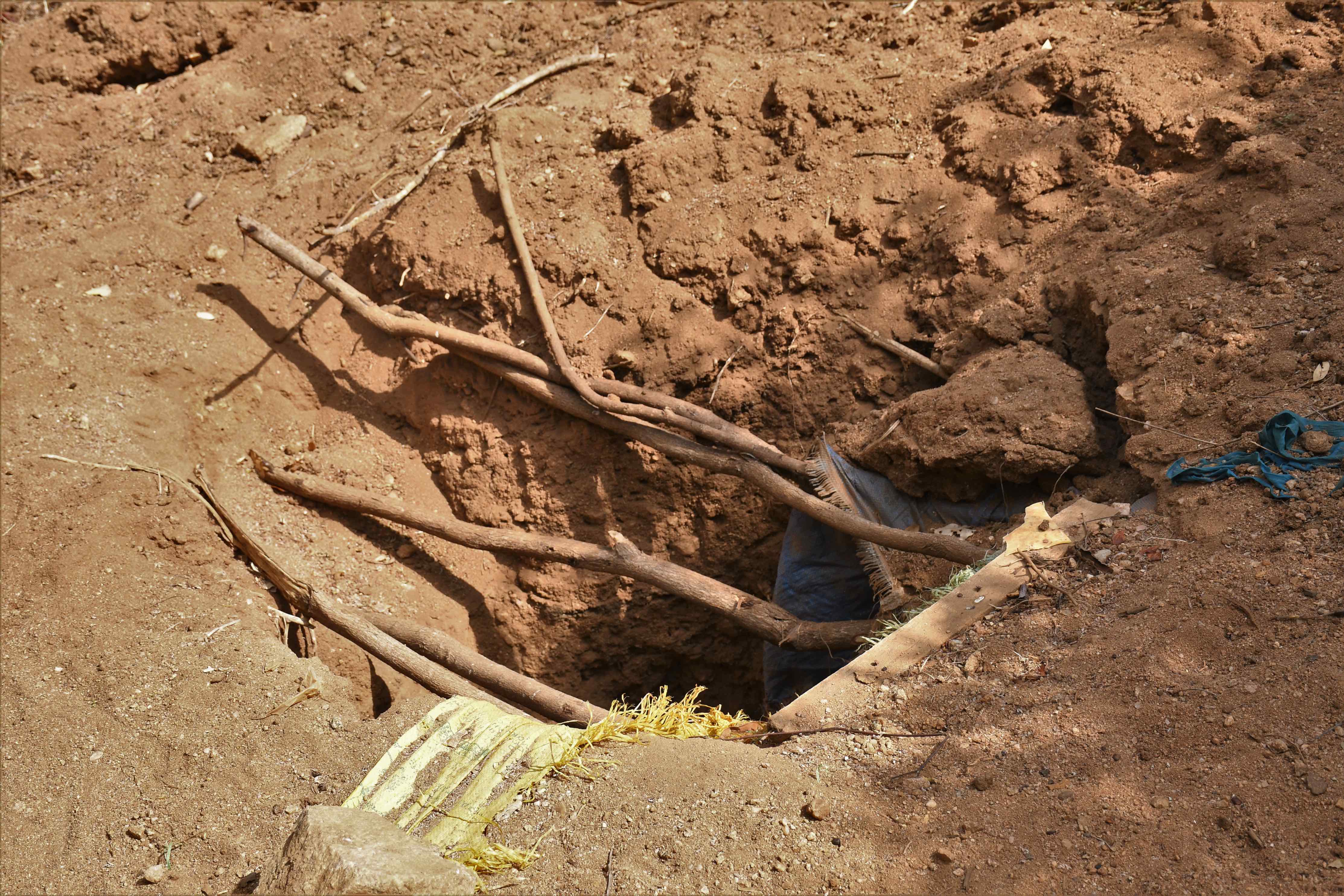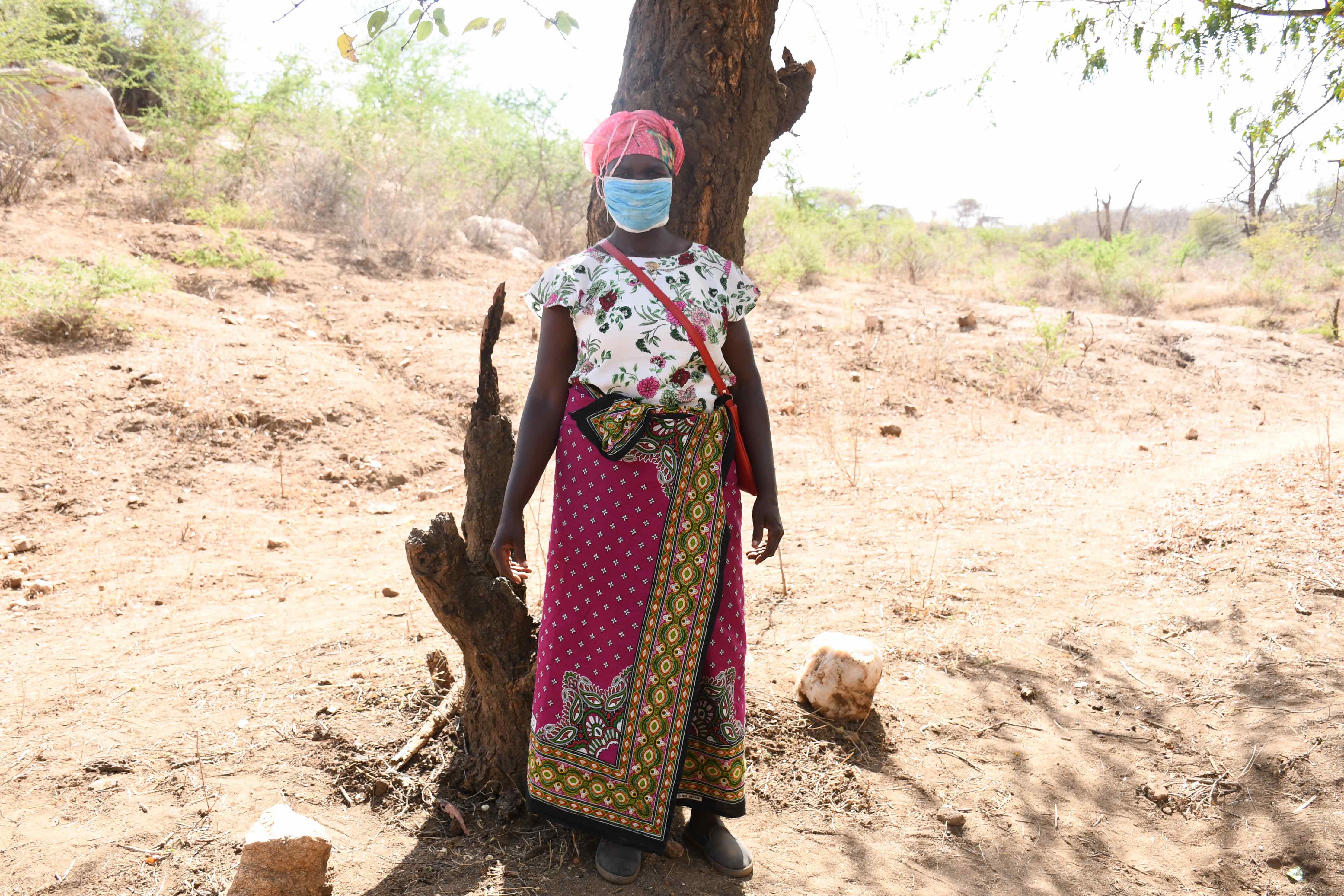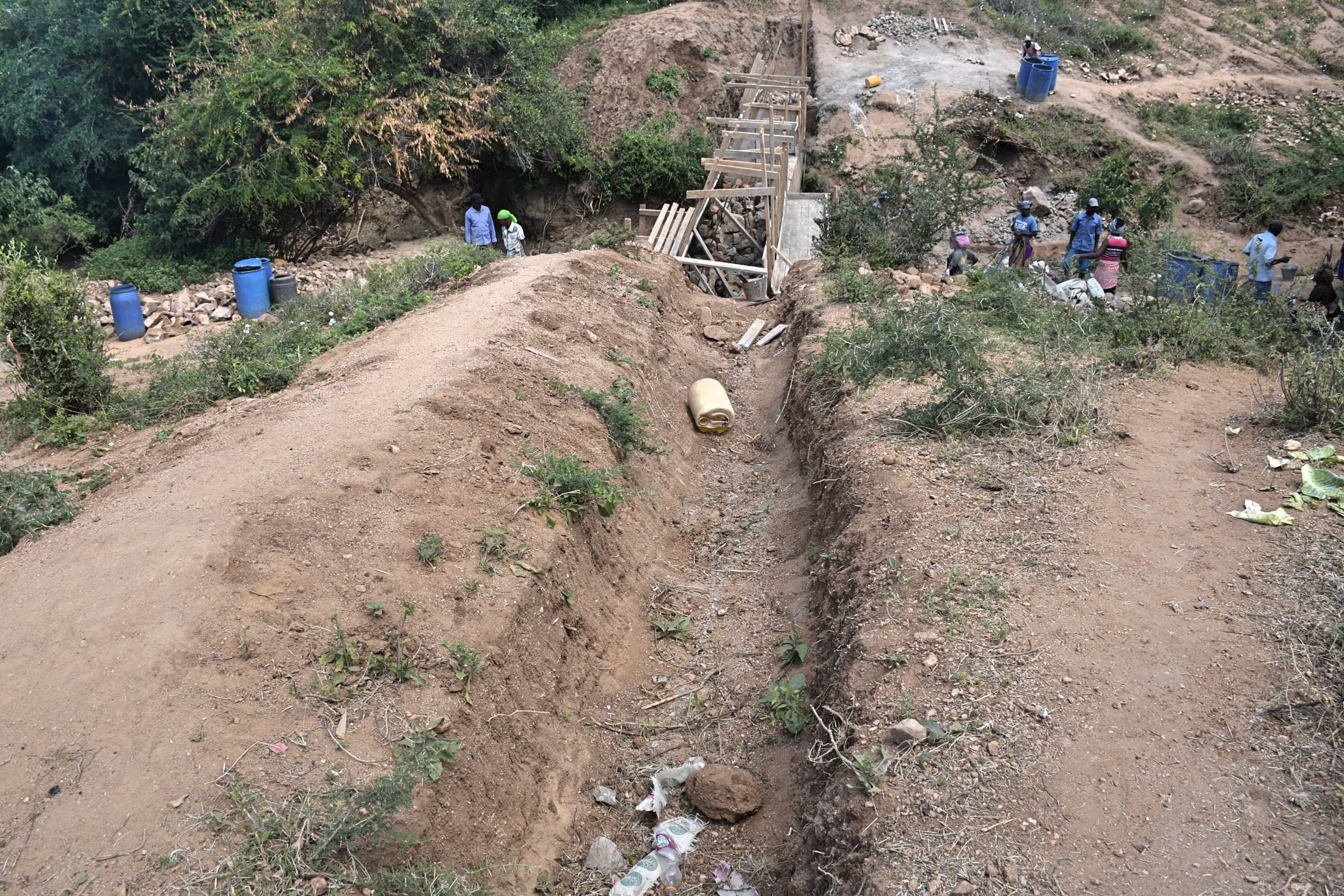Because of the acute water scarcity in this region, some community members walk more than two hours each way to fill their buckets and jerrycans with salty, unsafe water. They arrive home feeling exhausted and unable to focus entirely on other activities such as farming and livestock keeping.
The arid climate means that the river that once flowed through this region is now dry most of the year. This leaves the people here with two options: buy water or dig a deep scoop hole (pictured below) where the river once was to reach water deep underground.

"The water point is far away, and I have to walk about five kilometers to acquire water for my family," said Damaris Kasilu, a local farmer (pictured below). "When the scoop holes dry, I have to walk several kilometers to purchase water. This is quite expensive, especially since I do not have crops to sell, thanks to the water scarcity."

Hygiene and sanitation in the area are below human standards. Most of the community members are unable to brush their teeth or bathe because of the water crisis. Homes are not cleaned regularly. Poultry animals can also find their way to households' interiors, which further deteriorates hygiene.
"The water is also contaminated, but I do not have any other option besides drinking it and using it for cooking," Damaris continued. "It is also difficult for me to uphold proper hygiene and sanitation because I have to use the available water sparingly."
Latrines are rarely cleaned, with most families pouring wood ash inside to reduce the unpleasant smell. The latrines' pits are also open so that houseflies can spread germs to other homestead areas.
Because of the unsafe water and unclean conditions, people complain of stomach aches, while others have been diagnosed with infections such as typhoid, amoeba, and dysentery.
What we can do:
Our main entry point into the community is the Kiliku Self-Help Group, which comprises households working together to address water and food scarcity in their region. These members will be our hands and feet in constructing water projects and spreading the message of good hygiene and sanitation to everyone.
Sand Dam
After the community picked the ideal spot, our technical team went in and proved the viability by finding a good foundation of bedrock. Now, our engineers are busy drawing up the blueprints.
We are unified with this community to address the water shortage. As more sand dams are built, the environment will continue to transform. As the sand dams mature and build up more sand, the water tables will rise. Along with this sand dam, a hand-dug well will be installed to give community members an easy, safe way to access that water.
Building this sand dam and the well in this community will help bring clean water closer to hundreds of people living here.
Training
These community members currently do their best to practice good hygiene and sanitation, but their severe lack of water has significantly hindered reaching their fullest potential.
We will hold hygiene and sanitation training sessions with the Kiliku Self-Help Group and other community members to teach essential hygiene practices and daily habits to establish at the personal, household, and community level. This training will help to ensure that participants have the knowledge they need to make the most out of their new water point as soon as the water is flowing.
One of the most important topics we plan to cover is handling, storage, and water treatment. Having a clean water source will be extremely helpful, but it is useless if water gets contaminated when it is consumed. We will also emphasize the importance of handwashing.
The community and we firmly believe that all of these components will work together to improve living standards here, which will help to unlock the potential for these community members to live better, healthier lives.
We typically work with self-help groups for 3 to 5 years on multiple water projects. We will conduct follow-up visits and refresher training during this period and remain in contact with the group after all of the projects are completed to support their efforts to improve sanitation and hygiene.

 Sand Dam
Sand Dam
 Rehabilitation Project
Rehabilitation Project






























